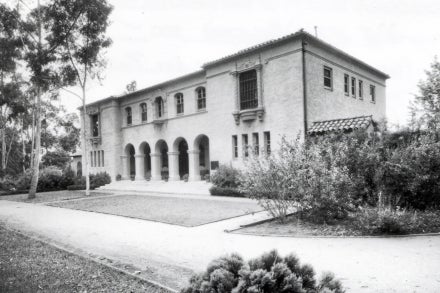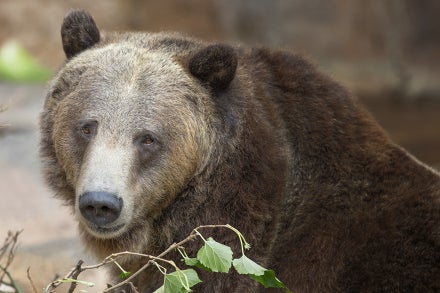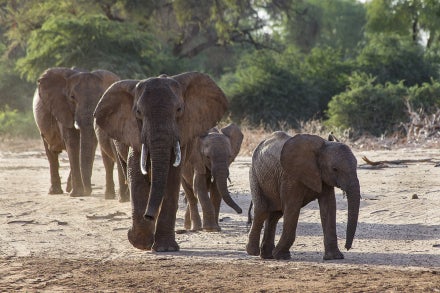
One exciting aspect of wildlife conservation has been the introduction of cutting-edge technology. Here at the Safari Park, we have begun using drones to elevate the care we provide for the wildlife entrusted to us. Safari Park Aerial Reconnaissance Conservation (SPARC) is a new and developing program that can be utilized in a variety of ways.
The drone we currently use the most is the DJI Matrice 30T (M30T). Some of the cool features include its three cameras—a 48-megapixel wide camera, a 12-megapixel telezoom camera, and a thermal camera. It has a 7,000-meter service ceiling, a flight time up to 41 minutes, maximum speed of 51 mph, and an ability to handle adverse weather with temperatures ranging from -4 to 122 degrees Fahrenheit. Add in the drone's laser rangefinder of 3 to 1,200 meters, and we have a device that allows us to document various wildlife care situations, navigate our unique landscape, and maximize nighttime surveillance.

High-flying technology: James Sheppard, Ph.D., a scientist with the Recovery Ecology team, uses drones in his work in our Oceans Conservation Hub.
Using drones, we are able to maintain a hands-off, nonintrusive approach to wildlife observation, while still being able to respond, if needed, in real time. With a giraffe in the field about to give birth, the drone can deploy 172 feet in the air, then zoom in and monitor how the birth is progressing. Wildlife care staff on the ground are a radio call away from assisting should the need arise. Once the calf is born, the drone can continue to monitor when it first stands and nurses, as well as monitor the behavior of other animals in the field. The bird’s-eye view offers a different perspective of wildlife space use and helps wildlife care specialists make the best decisions possible for the well-being of the wildlife in our care.
There is another part of the Safari Park most guests do not get to see—the 1,000-acre Biodiversity Reserve. The reserve is one of the largest remaining expanses of coastal sage scrub and chaparral habitat and is located at the intersection of two critical wildlife corridors. Drones help us with monitoring and mapping this vital wilderness, which is part of our Southwest Conservation Hub. We can program the drone to map out and record sections of the reserve and, over time, use that information to better understand how to coexist with local wildlife and protect this threatened flora and fauna.
With the M30T’s thermal camera, we are even able to use the drone at night! With no lights in our savanna habitats or the Biodiversity Reserve, the thermal camera is a game changer. If there is a concern, we are able to deploy the drone and monitor the area and animals discreetly and without disturbing them. Local wildlife is more active at night, and the drone helps navigate the landscape, making it easier to track the animals to better understand their patterns and help us coexist. We also use the drones to assess our perimeter fence lines, record situations to use as teaching tools, and for emergency and disaster response.

Taking it all in: Author Monica Friend uses a drone’s thermal camera over one of the Safari Park’s field habitats.
Drones are also a key component of San Diego Zoo Wildlife Alliance’s conservation projects throughout the world, allowing scientists to identify, observe, and monitor wildlife and their ranges and, in certain instances, gather diagnostic materials. The drone program is a game changer, and it is exciting to think of all the possible new ways we can help wildlife here and around the world.




